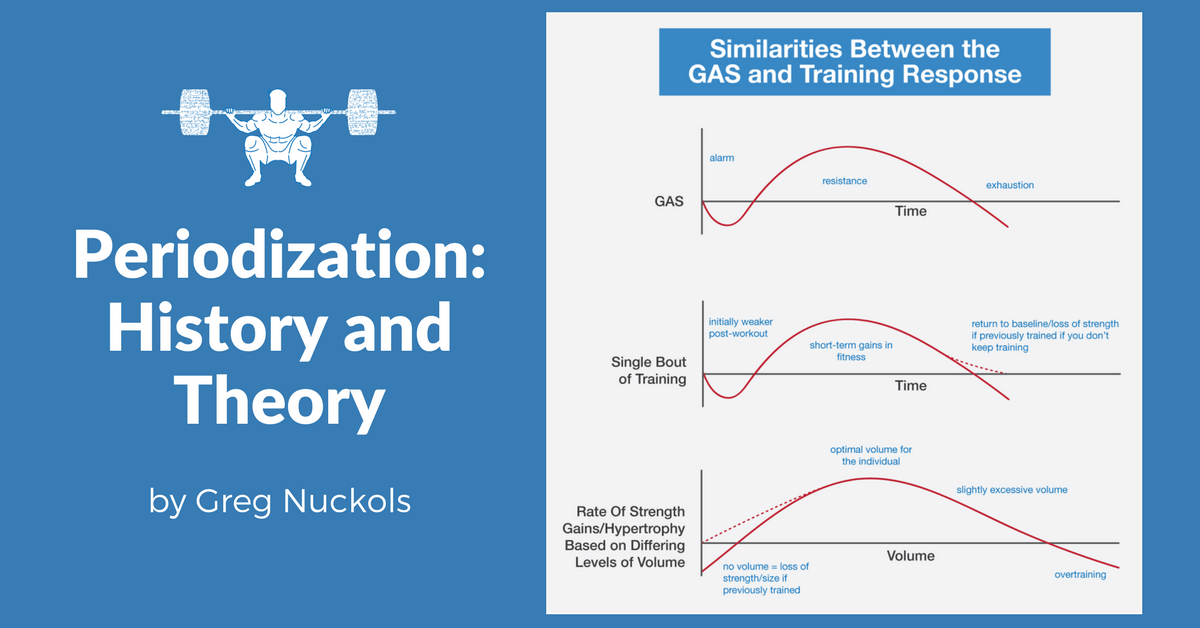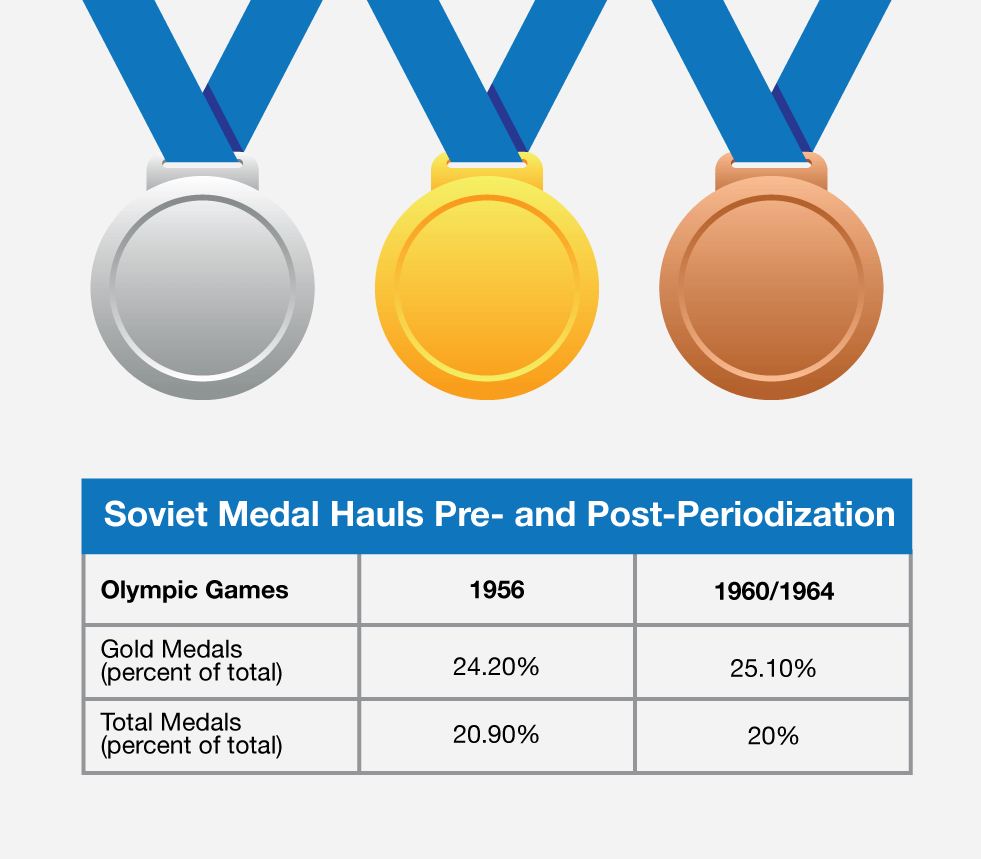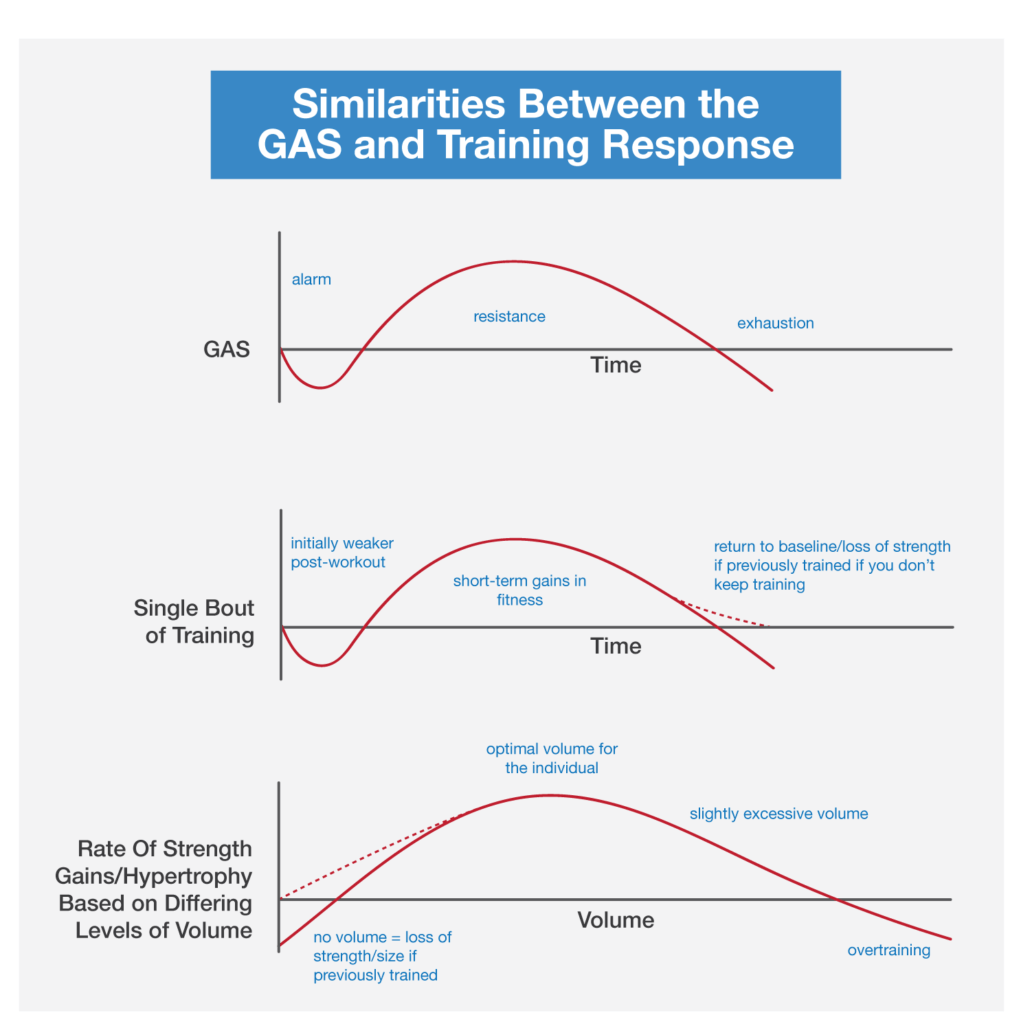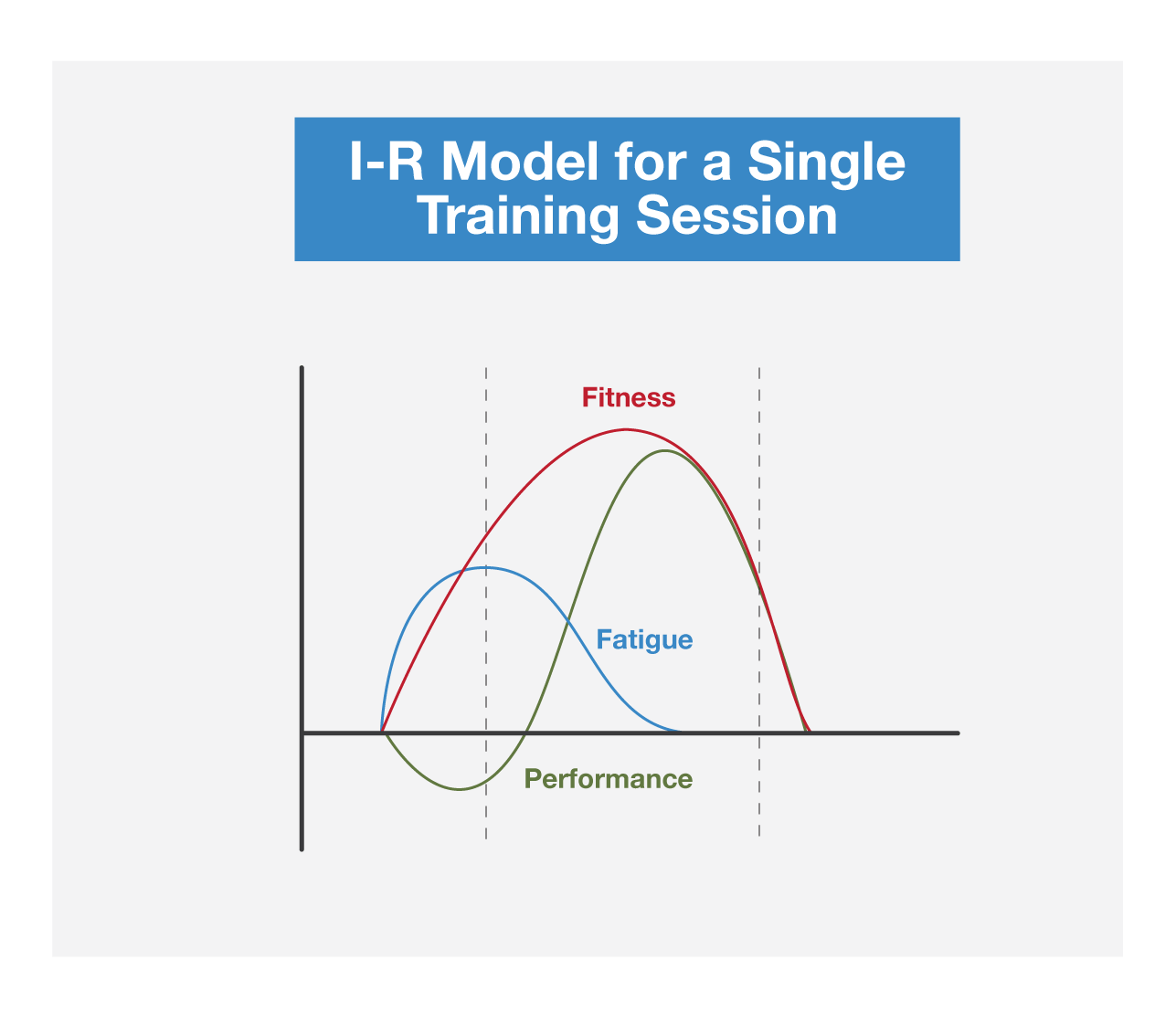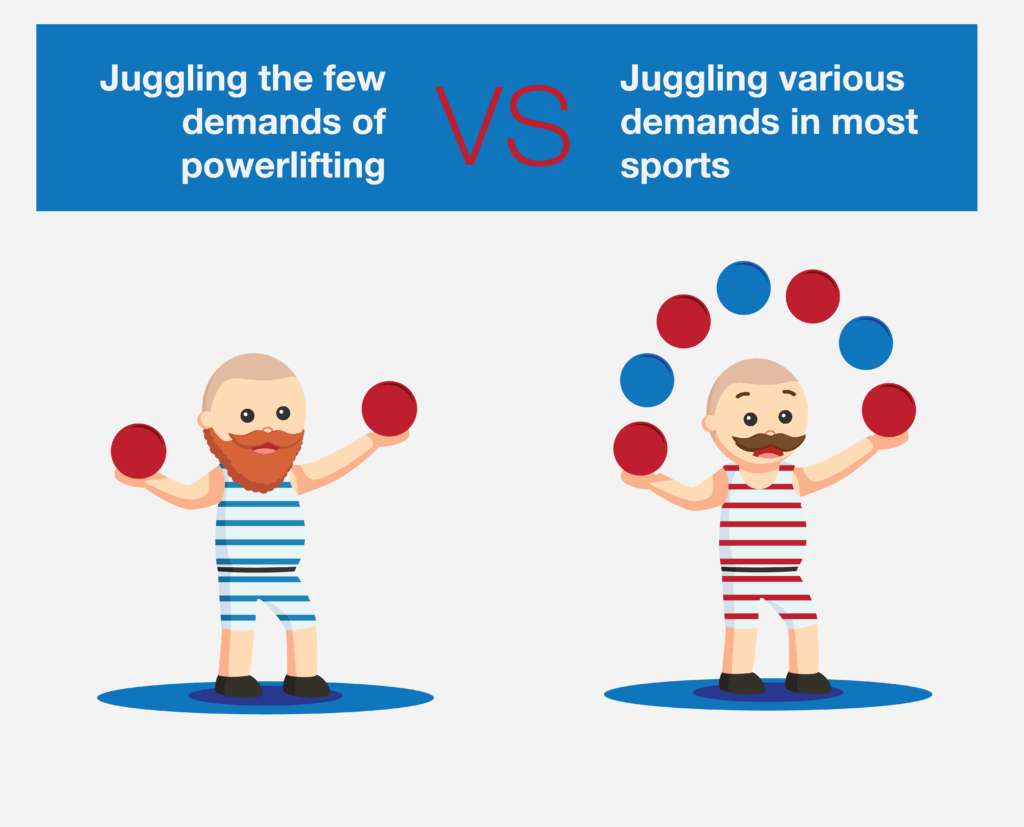Periodization is heavy on theory and lore, but surprisingly light on research – at least research regarding the underlying assumptions of periodization. However, the history and theory of periodization are important for understanding its implementation (and to understand why I’m comfortable opposing popular wisdom at times), so we’ll start there. The second part of this series will discuss what the research actually does say about periodization, and the third part will discuss practical applications.
As you’ll see, the story of periodization isn’t quite as pristine and straightforward as it’s often presented, and as always, context is important. My basic premise is that “periodization,” as it’s typically understood, absolutely has merit, but it’s been made entirely too complicated based on an accumulation of theory and explanatory baggage that’s often unjustified, or at least unverified. The “good” and useful aspects of periodization, on the other hand, tend to be quite simple and intuitive – there’s no reason for periodization to be as heady, inaccessible, and confusing as it is.
History
Periodization originated in Russia following the 1956 Olympic games. It was based on two things that were very in vogue in Russia at the time: General Adaptation Syndrome (GAS) and long-term centralized planning (i.e. the Soviet 5-year plans).
Periodization is, at its core, a means of top-down, long-term planning and organization. The Soviets in the Stalin era loved top-down, long-term planning. Sometimes it worked out well (i.e. their incredibly rapid expansion and modernization or their manufacturing and energy sectors post-WWII, for example) and sometimes it worked out horrendously (i.e. the Soviet famine of 1930-1933). The original impetus behind periodization was simply the Soviet long-term, top-down planning fetish applied to sport. If you were a USSR sports coach during this time period and one of your athletes had his eye on the Olympics in 4 years, of course you’d need to have a top-down plan to organize their training 4 years in advance. It can’t be stressed strongly enough that they didn’t have data to show that long-term planning (yearly and quadrennial cycles) produced better results than shorter-term planning that was more responsive to the athletes; it was simply a deeply embedded cultural assumption that such endeavors were inherently superior. The periodization models that arose in this era were based on retrospective analyses of the more and less successful athletes in the 1956 and 1952 Olympics, but (to my knowledge) no good prospective studies were carried out.
The mythos in the West is that periodization (and other “Soviet secrets”) explain why the USSR dominated the Olympics through the Cold War era. The secret means of periodization didn’t make it to our coaches until later, so we were left playing catch-up and, naturally, once we caught onto the game, the secret Soviet programs were still light years ahead of ours.
The problem with that explanation is that it ignores much more important factors such as the state-sponsored and extensively funded talent identification/development programs in the Soviet Union, along with their pioneering role of heavy “chemical assistance” in sport (other countries did it, of course, but the USSR did it first and probably did it best). When you examine the research, drugs and differences in innate talent make a much larger difference in performance than choosing one training program over another (assuming both training programs are sufficiently challenging and specific to the goals of the athlete). Even for something as basic as training volume, higher training volumes DO lead to faster strength gains than lower training volumes, but the advantage is somewhere around 20-25%; however, responses to the same training program can vary more than four-fold, and steroids may help you build twice as much muscle over a training career.
More importantly, Soviet Olympic results didn’t meaningfully improve when periodization became formalized and widely adopted. There simply aren’t meaningful differences between their last pre-periodization medal haul and their following results once periodization became adopted.
General Adaptation Syndrome
General Adaptation Syndrome (GAS) proposes that when exposed to a stressor, there are three general phases: the alarm phase, the resistance phase, and the exhaustion phase. The alarm phase is characterized by a drop in “performance” as your body is initially hit by the stressor. The resistance phase is characterized by heightened “performance” as the body learns to cope with the stressor. Finally, exhaustion phase is characterized by a rapid drop in “performance” as the magnitude or duration of the stressor overwhelms the body’s ability to cope with it.
You’ll notice that I put “performance” in quotation marks. There’s a reason for that: the actual research on GAS wasn’t actually looking at any sort of performance we’d be interested in. It was mainly looking at the way the immune system and endocrine system of mice coped with lethal or near-lethal doses of various stressors (drugs, temperatures, forced exercise, etc.). It also dealt primarily with acute responses (the pattern of hormone release or organ changes) to stressors which followed the alarm —> resistance —> exhaustion pattern, instead of applying to anything resembling a long-term training program. The only non-acute GAS research involved building up resistance to drugs: When mice were given a fraction of the lethal dose of a drug, it would subsequently take a longer exposure to a lethal dose to kill them, it would take a larger total dose to kill them, or the lower dose would eventually kill them even after it looked like they’d adapted to it. Furthermore, when given a non-lethal dose of a single drug, it would take a smaller dose of a second drug to kill them, indicating that their adaptations weren’t solely drug-specific, but that they had a finite amount of “adaptation energy” to all stressors (this, combined with the similar set of responses to all lethal stressors, is where the name “general” adaptation syndrome came from).1Here’s Seyle’s first paper on the topic. It’s interesting to compare the simple language and style of this world-changing paper to the jargon of the typical study today.
The application of GAS to exercise doesn’t generally get a ton of pushback because several facets of exercise adaptation do look a lot like GAS (and most people either tend to not actually understand the GAS research, or assume it’s a lot more generalizable than it is). After a workout, performance decreases acutely (you’re weaker when you leave the gym than you were when you entered it), you’re stronger after a few days of recovery, and then your strength drops off again without further training. Furthermore, with the correct amount of training, performance improves, while excessive training can cause overtraining and a drop in performance. Both of these curves look a lot like the alarm-resistance-exhaustion curve, but the factors explaining them and the measures taken to derive those curves (i.e. 1RM strength when training rather than something like thymus damage is the GAS research) are dramatically different. Overtraining itself may resemble the exhaustion phase of GAS as well, to some degree, but GAS is still not a great explanatory model for it (as GAS research looked mostly at acute stress responses, not responses to long-term training programs).
(To ensure this section is still helpful – actually proposing a better alternative instead of just shitting on GAS – Banister’s Impulse-Response or Fitness-Fatigue model was developed specifically for exercise and explains the acute and chronic changes in performance with training much better than GAS does)
Several facets of GAS lent theoretical underpinnings for periodization:
- A training stimulus needed to be big enough to push you into the “resistance” phase of increased performance, but a training stimulus that was too large or (especially) maintained for too long would lead to exhaustion. Therefore, training stimuli needed to be changed or cycled periodically.
- Because there’s a finite amount of “adaptation energy,” each phase of training should only be devoted to training a single physical characteristic or a narrow range of characteristics. Training too many physical qualities simultaneously will decrease the rates of adaptation for all of them, while increasing risk of exhaustion. This also supports an argument for cycling (periodizing) training aims.
- Training load can be progressed over time, as prior exposure to a stressor allows someone to tolerate a larger stressor in the future without experiencing exhaustion.
Each of these implications of (a bastardized and massively extrapolated understanding of) GAS has merit, but “because GAS” falls short as a sufficient rationale for uncritical acceptance.
It’s true that training too hard can lead to burnout and overtraining, diminished results relative to a slightly lower training load in less extreme circumstances, or excessive required recovery times when dealing with a single training session. However, using GAS as a rationale for cycling stimuli makes little sense. Remember, the GAS research itself dealt with acute stress responses rather than long-term stress responses, immediately making its application dubious. Additionally, while a training load bringing about short-term gains in strength may lead to burnout in the long term, the opposite scenario is equally likely: as you adapt to a given training load, the current stressor slowly becomes insufficient rather than excessive – in that scenario, simply increasing the training load may make more sense than cycling to a new stimulus.
It’s also true that training multiple physical characteristics simultaneously may decrease rates of adaptation and increase your risk of overtraining. The classic example is the “interference effect” – aerobic training (especially high volume cardio applied incorrectly) can decrease rates of muscle growth and strength gains, which may lend some credence to the “adaptation energy” concept. However, the idea of general “adaptation energy” falls apart as well upon closer scrutiny. Working in the opposite direction of the interference effect, strength training and plyometric training added to aerobic training has actually been shown to enhance endurance performance – the interference effect on hypertrophy and strength is explained by specific muscular and nervous system effects, just as the beneficial effects of strength training on endurance performance are explained by specific muscular and nervous system effects. General adaptation energy doesn’t seem to have much to do with it.
Finally, while it’s true that prior exposure to a stressor allows you to tolerate larger stressors of the same kind in the future without leading to exhaustion, these adaptations for strength training are again primarily specific (i.e. the repeated bout effect, bringing about changes in the nervous system and connective tissue) rather than general. Furthermore, the GAS research itself was simply interested in the effects of prior stimulus exposure on subsequent risk of death when exposed to an extreme stressor, not on the subsequent training load required to bring about further beneficial adaptations (i.e. strength and fitness). You can use GAS as an explanation for the way training loads can be/need to be progressed over time, but there are simply much better explanations.
On the surface, GAS seems to bear some degree of resemblance to the way we respond and adapt to training. It’s a simple enough concept that it can serve as a useful model to understand the training process on some level before actually digging into the specific ways people adapt and respond to training. However, GAS itself is actually not directly applicable to many aspects of training, so using it as a foundation to base periodization upon is more than a little iffy. 2 I’m not arguing that periodization is “wrong” because there are issues with GAS. That would be a logical fallacy. For example, if someone says “triangles have three sides because the illuminati made them that way,” discarding the illuminati business doesn’t then imply that triangles don’t have three sides.
The Simplicity of Powerlifting
There are a few assumptions of all periodization models:
- Your aim in any training program is to perform well at all important competitions, and to attain peak performance at the most important competition/s of the year and/or at the Olympics.
- Training brings about specific adaptations.
- Training different attributes can cause interference, leading to smaller/no beneficial adaptations.
- It takes less training volume to maintain a particular adaptation than to develop it initially.
- Training adaptations build upon each other, so the sequence you train them in can dramatically affect your performance at the end of a training cycle.
I’m actually not going to argue against any of these assumptions. There’s data to support some of them, and others are almost self-evidently true (in some contexts, at least).
However, these things play out differently when dealing with different sports. Specifically, powerlifting is a bit of an outlier in its simplicity.
For example, let’s compare powerlifting to a sport like American football.
Football will require some base level of aerobic and anaerobic conditioning if you don’t want to be too worn down by the end of the game. It also requires plenty of muscle mass to bully other players and provide a foundation for force generation, plenty of strength, a load of explosiveness (power/velocity), and a lot of practice to simply master the skills of the game, along with your team’s offensive and defensive game plans.
The vast majority of other sports will have similar requirements. American football may be heavier on building muscle mass and force output, while real football (soccer) leans more toward aerobic/anaerobic conditioning, for example, but both sports require aerobic/anaerobic conditioning, high capacity for velocity and power output (which are partially reliant on force output, which is partially reliant on hypertrophy), and a load of technical skill and teamwork.
For most sports, you’re trying to train a lot of physical capacities that can be antagonistic (i.e. a lot of aerobic training can hinder hypertrophy, strength, and especially power/velocity outcomes), and training all of these characteristics induces training stress that makes it very difficult to improve your performance in all dimensions simultaneously (much less maximize the rate of any of these adaptations). In other words, if you need to improve your conditioning and get more explosive, a ton of conditioning work will almost certainly limit the quality of your explosive training and limit your gains in power/velocity.
Of course, the athletes also need to be fresh enough for their actual skill work and sport practice to improve in the dimensions that are actually the most important on the court/field. That curtails the ability to train any physical characteristic maximally, at least for some periods of the year. Furthermore, the athletes generally need to be fresh for multiple competitions throughout the year (typically compressed into a competitive season with a week, at most, between competitions), and also recover from the competitions themselves.
With all that in mind, classical periodization models make sense (definitely theoretically, and often in practice) for most sports. It often takes a fair amount of top-down planning to figure out when you’re going to really push for certain adaptations while simply maintaining other physical qualities, how you’re going to balance all the competing demands, etc.
I hope you don’t mind that I’m not going into much detail here – this article series is about powerlifting, after all; I’m simply trying to convey the variety and complexity of demands in other sports.
Powerlifting, on the other hand, requires four basic things (and the first two are by far the most important):
- Proficiency in three relatively simple exercises.
- Enough muscle mass to produce a lot of force.
- Being fresh on meet day so fatigue doesn’t hold back your performance.
- Decent enough body composition that you’re not in an unnecessarily high weight class.
So, how do you build proficiency in the squat, bench, and deadlift?
You squat, bench, and deadlift (or perform exercises that are very similar to the squat, bench, and deadlift – more on that later in this series) pretty heavy with reasonably high training volume.
How do you build muscle mass to produce a lot of force?
Well, you probably won’t find many exercises that are better for building muscle mass specific to the squat, bench, and deadlift than the squat, bench, deadlift, and exercises very similar to those lifts. And, lo and behold, you can build muscle mass effectively training pretty heavy with reasonably high volume.
Being fresh on meet day isn’t rocket science. Just drop training volume for a few weeks before the competition.
Finally, body composition isn’t overly reliant on training. You may need to cut back on your training volume and/or intensity a bit while you’re dieting down to a leaner body composition, but that shouldn’t require massive changes to your training (the same general type of training that’s effective for building muscle and strength in a caloric surplus or at maintenance is probably going to be effective for maintaining muscle and strength in a caloric deficit).
Simply put, powerlifting is an exceptionally simple sport. There aren’t as many physiological capacities that need to be highly developed (i.e. increasing your aerobic capacity may help you tolerate more training volume and recover a bit faster between sessions, but you don’t need to be conditioned like a football player), and your training sessions double as your sport practice. The biggest theoretical benefit of periodization is that it helps you manage the competing demands of training for your sport, but there really aren’t many competing demands in powerlifting.
So, to wrap things up:
- The widespread adoption of periodization had less to do with verification of superior results produced by periodized training, and more to do with Soviet-era assumptions about the superiority of top-down, long-term planning and subsequent Western assumptions about the superiority of Soviet training methodologies.
- The features of GAS may resemble some of the ways we respond to training, but the GAS research itself isn’t directly applicable to strength training. Therefore, appeals to GAS don’t provide a strong basis for periodized training, though GAS is almost always invoked as one of the theoretical underpinnings of periodization.
- Periodization theory proposes ways to organize training for varied and often contradictory physiological adaptations. However, the simplicity of powerlifting simply doesn’t require the same level of organization, as the demands of the sport (and the means of training for those demands) are all amenable to the same general sorts of training stimuli.
I want to reiterate one of my initial statements in closing: I’m not “against” periodization. However, I do have issue with a) some of the lore surrounding it and the reasons people lean on to support its efficacy b) its incredibly heavy reliance on theory (with most of the “theories” being traced back to GAS in some way) over data and individual athlete results, and c) the assumption that all of that theory can and should be ported over to powerlifting, without stopping to consider that powerlifting is a much different and simpler sport than most others.
In the next installment of this series, I’ll address the actual periodization research that’s relevant to strength development. In the third and final installment, I’ll discuss how we can use periodization on a practical level, and argue that viewing periodization as a simple exercise in problem solving (instead of relying so heavily on theory) preserves its good aspects while dispensing with a lot of unnecessary baggage.
Final notes: for more reading about the lack of applicability of GAS research to strength training, I’d recommend this review. I’d also like to thank Mike Tuchscherer. One of his presentations in the European Powerlifting Conference helped clarify a lot of these ideas for me.
Edit:
Part 2 is up! Check out Periodization: What the Data Say to see what we can take away from the research about the effects of periodization and periodization style on strength and hypertrophy.
Read Next
- How to Choose the Right Load Progression Strategy
- Tapering and Peaking: Why and How
- The Complete Strength Training Guide

